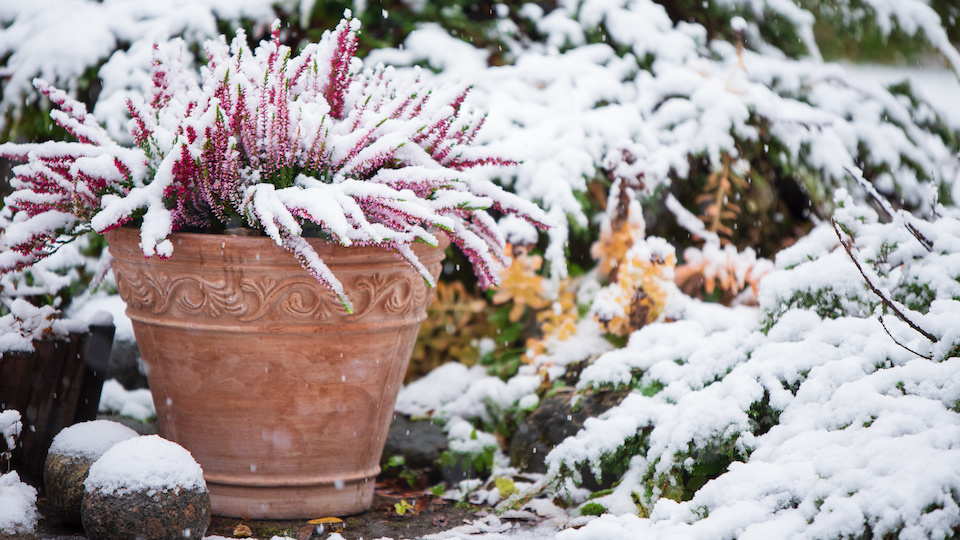Everyone loves containers. The ease of planting, the portability, the ability to have a bountiful tomato harvest on your back patio. As small-space gardening has risen in popularity, containers have become more readily available, but sadly not less expensive. If you have invested in nice-looking pots and want to preserve them for as many seasons as possible, it is important to take these key steps before winter sets in for good.
Clean them well
Pots, especially porous pots like ceramic and clay can hold onto plant and fungal bacteria, which can afflict whatever you choose to plant in them next year. Clean all of your pots thoroughly, inside and out, using a nine parts bleach to one part water solution and a hard bristle brush. Allow them to dry out in the sun for about a day before storing. This process will help remove any lingering pests and diseases and keep your pot looking its best.
Empty pots
Though it seems like you should be able to save that healthy, rich soil and use it again next year, keeping it in the container can lead to cracking and disease development. Add soil and dead plants to the compost bin to recycle it into next year’s dirt.
Keep them indoors
Plastic pots will stand up to a harsh winter, but clay, terracotta, and ceramic pots are likely to crack in freezing temperatures. These pots are porous, which means that they retain a small amount of moisture. Over the winter, this moisture will repeatedly freeze and thaw, causing the pot to expand and shrink, which can lead to cracking and breaking. Though glazed ceramic pots have a coating that is more water-resistant, they will still hold some moisture.
Store these pots in an indoor storage area like a basement, attached garage, attic, or closet. Try to keep them away from freezing temperatures whenever possible.
Wrap them
Moving and storing pots is a recipe for disaster. Instead of spinning the wheel of chance, crossing your fingers, and just hoping that your pots make it through the winter, take extra precautions and wrap them in newspaper, or another padding material. This will prevent accidental cracks and chipping and allow you to stack your pots to maximize storage space.
Overwintering plants
Though most pots and containers are used for annual flower and vegetable plants, you may have a perennial arrangement that you want to preserve while it’s dormant over the winter. Unless you live in an incredibly dry climate, moisture will still affect any pot that is left outdoors and filled with soil. The best way to avoid this is to plant your perennials in a plastic pot that you set inside of the ceramic pot. That way, when winter rolls around, you can simply remove the inner plastic pot and store your clay pot safely. If you didn’t plan ahead, transplant the perennial to a plastic pot for overwintering.
Cover large pots
Some pots are just too large to empty and move everywhere. In this case, wrap the pot in a few layers of bubble wrap for insulation and moisture protection. This is also beneficial if you have a perennial plant in the pot, as the added padding could protect the roots from a harsh freeze.
If you have no indoor space
Not everyone has a large indoor space to house all of their pots, especially if you live in an apartment and really embrace patio gardening. In an instance like this, or if you just don’t have any extra storage space, you can leave your pots outside over the winter. Move them under an overhand close to your house and get them off the ground by placing them upside down on a wooden pallet (many stores will let you have a few pallets for free). Cover with a waterproof tarp and hold it down with stakes or rocks to prevent it from blowing off in the winter wind. Only go this route as a last result, as it is not guaranteed to protect your containers.
A note on plastic
As mentioned above, plastic can safely stay outside over the winter. However, it is important to realize that plastic pots may become brittle from the sun, which can reduce their lifespan and force you to shell out more cash for new containers. When you are purchasing plastic pots, search for ones made of UV resistant plastic materials. These will usually last longer and are often more sturdy.
-Taylor Ramsey



